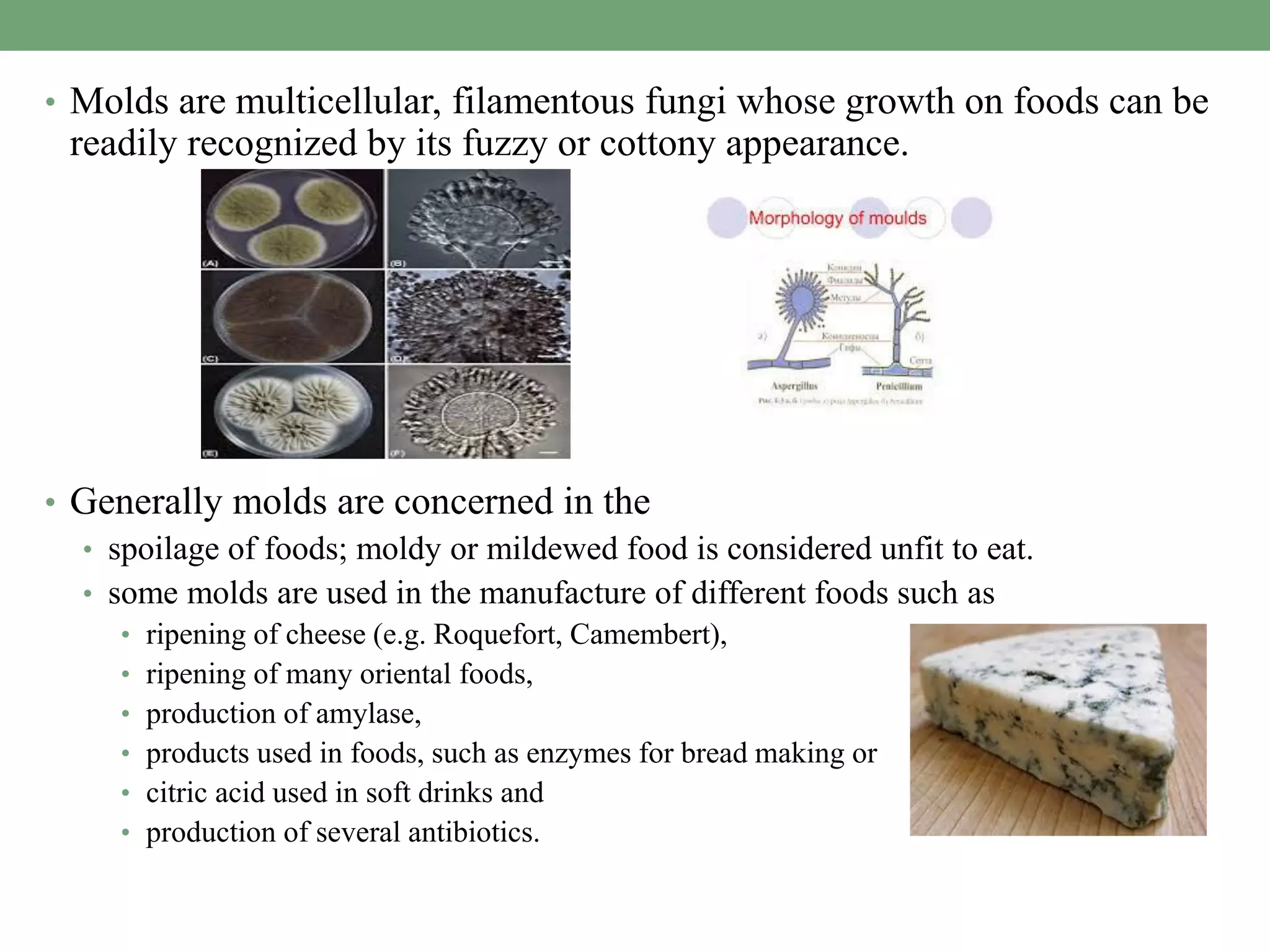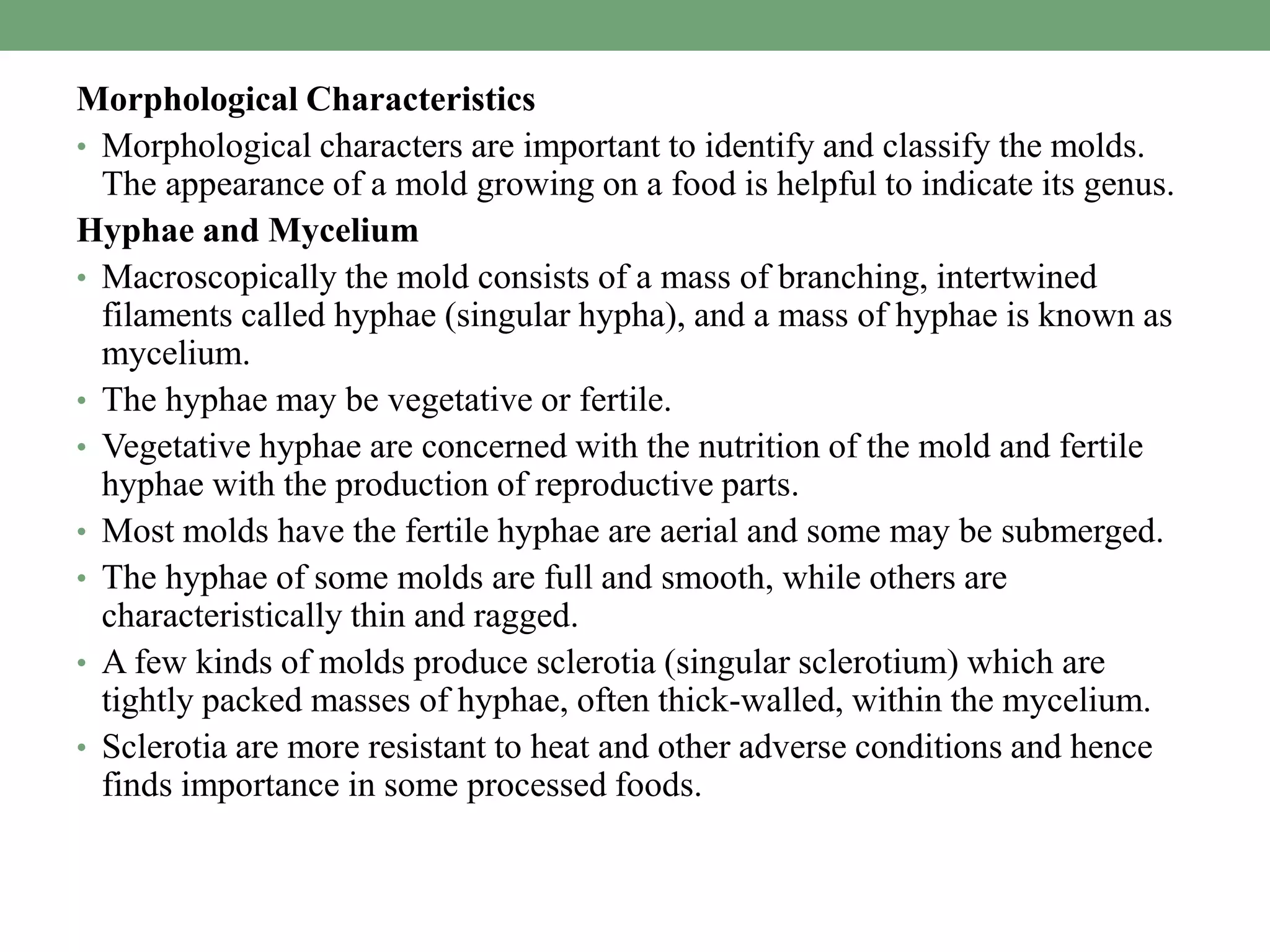Molds are multicellular, filamentous fungi that appear fuzzy or cottony when they grow on foods. While molds can spoil foods and make them inedible, some molds are used to manufacture foods like cheeses and breads. Molds consist of branching filaments called hyphae that make up the mycelium. Hyphae can be either vegetative for nutrition or fertile for reproduction. Molds require less moisture than bacteria or yeast but still need free oxygen and a pH between 2-8.5 to grow. Different molds have varying temperature and moisture requirements for optimal growth.







